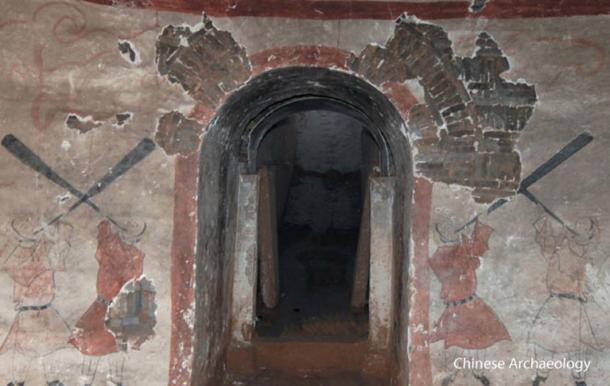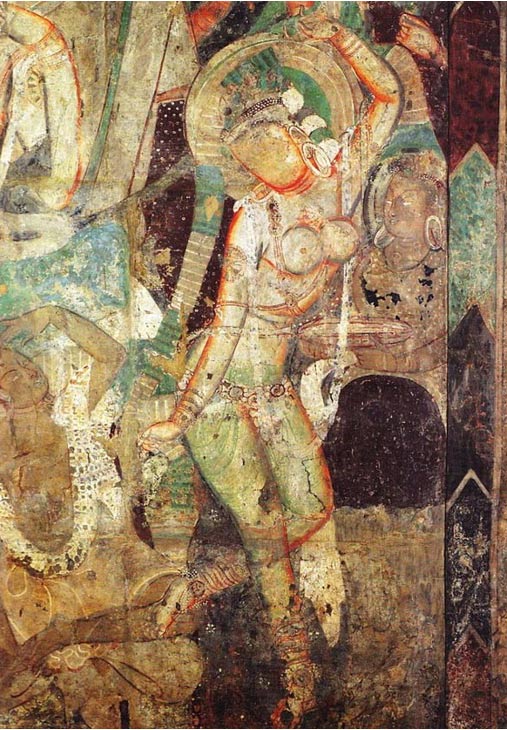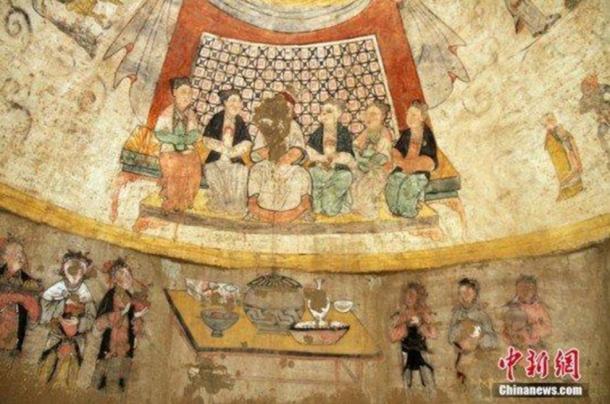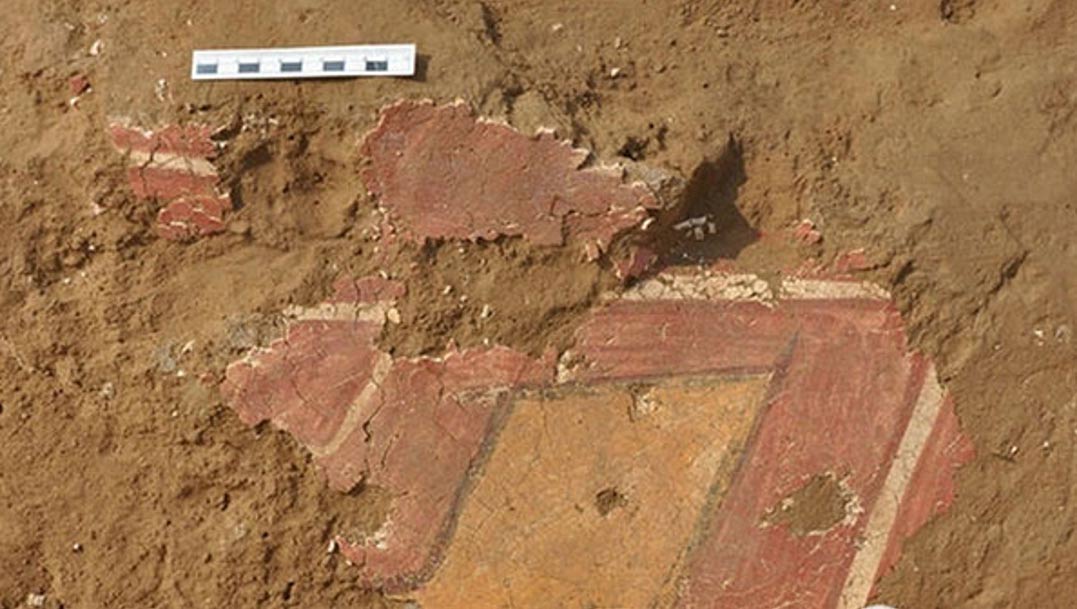Brush strokes on very ancient murals may rewrite the history of art in China
Recent discoveries in the ruins of a prehistoric city may rewrite the history of art in China. Archaeologists working in the ruins of the Neolithic Shimao Ruins have identified mural fragments that show possible brush strokes, which may mean the basic process of mural-making in China dates back about 4,000 years. Historians generally attribute the invention of the brush much later, to a Chinese general, Meng Tian, during the Qin Dynasty of 221 to 207 BC.
Experts examining the mural fragments have seen what they describe as marks on pigment layers that resemble those made with a brush. Also, some of the pigments were made from glauconite, which derives from the sea. The site of the Shimao Ruins is on the Loess Plateau, well inland.
“The history of using the brush by Chinese people will be rewritten if the tool used to make the mural is confirmed to be a brush. The source of the pigment is also a concerned matter for further research,"
experts told China Daily.
The story reports: “Since 2011 continuous excavations by Chinese archaeologists have found some 200 pieces of colorful murals in the Shimao Ruins, the largest completed urban construction in China, dating from the late Neolithic (4,600 to 4,000 years ago) age in Shenmu County, Shaanxi Province. The Shaanxi Provincial Institute of Archaeology recently issued a report on the discovery, saying that following lab experiments and analysis, the basic production process and rendering techniques used on the murals in Shimao Ruin were similar to those used to make frescoes dating from the Han Dynasty (202 BC to 220 AD) and later dynasties. This indicates the process and techniques were in use more than 4,000 years ago.”
The newspaper reports that the historical record relates that Chinese murals decorated houses and tombs as early as the Western Zhou Dynasty of 1046 to 771 BC, mainly in north China. Experts are now calling that region the birthplace of the Chinese mural.
Ancient Origins has had several stories about old murals unearthed in China over the past few years.
One article details a story from 2013 in Suozhou City, where archaeologists found an extremely well-preserved tomb with murals where a military commander and his wife were buried approximately 1,500 years ago in the Northern Qi Dynasty. The colorful murals cover 80 square meters (262 square feet) of the tomb.
While most of the tomb’s treasures had been looted, and the bodies were missing, the murals, drawn on plaster, are remarkably well-preserved and depict a man and a woman (most likely the occupants of the tomb) in various scenes. In one scene a man and woman are shown enjoying a banquet, and in another a man plays a harp while other musicians hold instruments. In addition to the commander’s wife, a number of other females are depicted in the murals, some of them musicians and some of them attendants.

The centuries-old mural in the tomb of a man and woman from Shuozhou City show a number of scenes of musicians, attendants and the night sky.
The highlight of the tomb is the domed ceiling, which shows how the ancient Chinese viewed the heavens. The Silver River or Milky Way, stars and the sun and moon are represented, with the sun bearing a "gold crow" at its center. Supernatural beings and zodiac animals are depicted below this sky map.
In Kizil Caves, the earliest major Buddhist cave complex in China that dates to between the 3rd and 8th centuries AD, many of the statues are missing but beautiful murals still adorn the walls. These murals contain a variety of religious themes, ranging from the life of the Buddha to allegories or parables concerning the doctrine of karma. The Kizil Caves are in the Xinjiang area of northwest China.

Dance of princess Chandraprabha, cave 83, Kizil Caves Public Domain
The beautifully painted wall of an ancient tomb was reported in 2014 in a near-perfect state of preservation in Datong City, northern China. Although the tomb occupant was missing from the 1,000-year-old tomb, the 2011 finding has nevertheless provided an in-depth understanding of its owner through the presence of vivid murals depicting scenes from his life. Another surprising feature of the tomb is a ceiling richly decorated with stars and constellations. The murals in this tomb depict the man’s travels with horses and camels, as well as a scene consisting of a deer, crane, bamboo trees, yellow turtle and a touching poem.
An elaborate, beautifully painted tomb was found earlier this year in Hengshan County, northern Xaanshi Province, when rains washed away soil and revealed a capstone on a hillside in China. The tomb dates to the Yuan dynasty, about 700 years ago.
Scholars believe the man entombed was Mongolian, though the clothes, furniture and murals show influences of Han culture. “So the tomb-owner might also be Han, but wearing Mongolian clothes,” archaeologist Miao Yifei told China.org.cn. “The murals are both beautifully painted and in very good condition, just thinking that they've been there for some 700 years.”

Paintings in a Yuan Dynasty tomb had beautifully painted scenes from stories of Filial Piety.
“It is composed of a pathway with a dome-shaped chamber. A mural depicts the tomb-owner seated with his five wives, the background being a check-patterned screen. Their outfits and the vessels on the table in front of them shed light on the ethnicity of the tomb-owner,” an article in China.org.cn said.
Featured image: A close-up shows part of one of the murals that may date back 4,600 years—well before the brush-stroke process of painting was known previously in China. (Photo: chinadaily.com.cn)
By Mark Miller

No comments:
Post a Comment